
Get the Most Out of WhatsApp Channels for Your Business in 2025
Written by:
 Rohan
|
on:
September 26, 2025
|
Last updated on:
October 30, 2025
|
Fact Checked by :
Rohan
|
on:
September 26, 2025
|
Last updated on:
October 30, 2025
|
Fact Checked by :
 Namitha
|
According to: Editorial Policies
Namitha
|
According to: Editorial Policies
Too Long? Read This First
- WhatsApp Channels let businesses share one-way updates with followers in a distraction-free space.
- Customers can join via links, QR codes, search, or prompts during sign-ups and checkouts.
- There’s no follower limit, making it easy to reach a wide audience at scale.
- WhatsApp Channels are great for announcements, promotions, and building a loyal community.
- They complement but don’t replace WhatsApp API features like automation, broadcasts, and chatbots.
Keeping your customers informed shouldn’t be complicated. However, many businesses struggle to cut through the noise and reach people at the right time. WhatsApp for marketing makes it easier than ever to share updates, announcements, and useful content with the right people.
With features like WhatsApp Channels, you can keep your audience informed in a clear and meaningful way. It’s all about using them thoughtfully to deliver updates that add value.
Let’s explore how WhatsApp channels can simplify communication and become a valuable part of your marketing toolkit.
What are WhatsApp Channels?
WhatsApp Channels let businesses and organizations share updates with their audience in a clear and organized format. You can think of them as a broadcast tool where you can send messages, announcements, and content to people who choose to follow your channel.
It’s different from group chats or one-on-one messaging. With WhatsApp Channels, you can share updates in a simple, one-way format that keeps your audience informed without unnecessary noise or distractions.
Introduced in June 2023, WhatsApp channels are perfect for sharing things like:
- Product launches
- Special offers
- Company news
- Industry insights
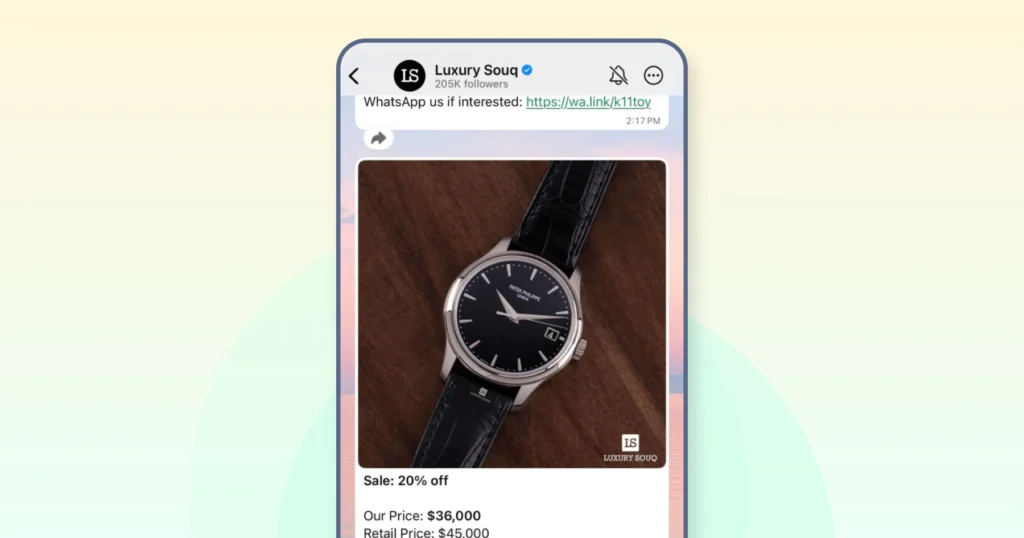
Your followers can see your updates when they want and stay connected without feeling overwhelmed. With WhatsApp Channels, only admins can send messages and control who can post, ensuring all communication is organized, professional, and easily monitored.
How WhatsApp Channels Work to Connect You with Customers?
WhatsApp Channels are built around how people prefer to receive information today. Customers want updates that are relevant, easy to access, and not mixed with constant back-and-forth conversations.
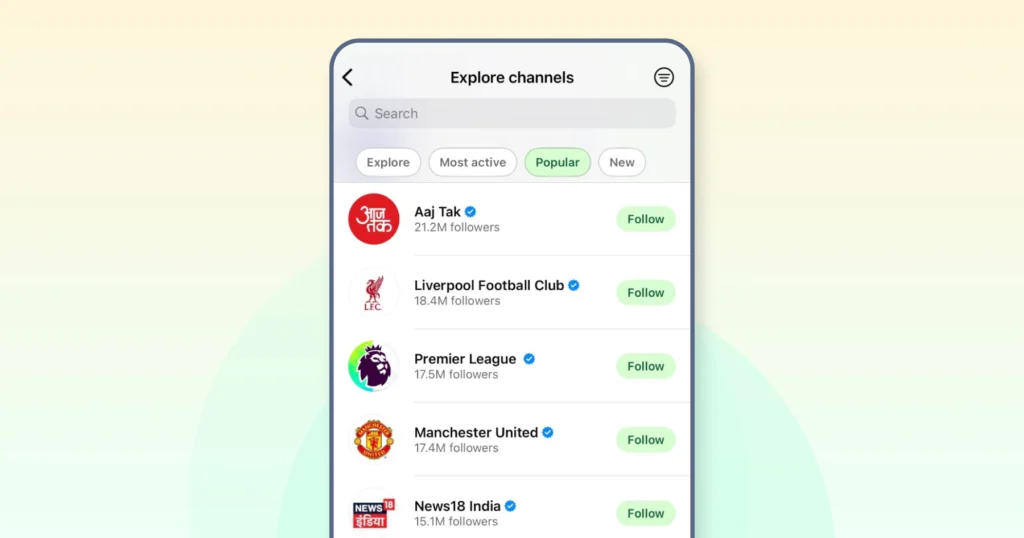
Channels let businesses send one-way messages to followers who opt in. This way, your audience gets the updates they care about without being overwhelmed by unnecessary replies or unrelated chats.
| As of 2025, WhatsApp boasts over 3 billion monthly active users, making it the most widely used messaging app globally. People are more likely to see your updates without having to download a new app or manage multiple platforms. |
Users can follow channels that match their interests and stay updated on their favorite brands. Businesses can invite customers to join during sign-ups, at checkout, while filling forms, or through a floating WhatsApp tab on their website.
This makes it easy for customers to subscribe and ensures they never miss updates, promotions, or announcements from brands they care about.
With WhatsApp Channels, your updates reach customers in a clean and distraction-free space. Promotions, offers, and announcements sit neatly in their channel feed, making it easy for them to stay in the loop. This way, your loyal community sees your updates on time and without the noise of group chats or cluttered inboxes.
WhatsApp Channels Guidelines for Businesses
To maintain a positive experience for followers and ensure compliance, you should adhere to WhatsApp’s Channels Guidelines.
- Respectful Communication: Avoid sending excessive or low-quality updates, as this may lead followers to unfollow your channel.
- Clear Channel Title: Provide a channel title that accurately reflects the content, helping users make informed choices about which channels to follow.
- Content Restrictions: Refrain from sharing content that could cause harm, including illegal activities, fraud, or age-inappropriate material.
- Transparency: Always offer an easy way for followers to opt out of receiving updates.
By following these guidelines, you can foster trust and build a loyal audience on WhatsApp Channels.
💡Related Resource: WhatsApp Group vs WhatsApp Broadcast
How Do People Join Your WhatsApp Channel?
Joining a WhatsApp Channel is simple. Users can find your channel through a link, QR code, or by searching your channel directly in the app.
Once they follow your channel, they’ll start receiving your updates right away.
The process is easy and hassle-free, making it more likely that customers will follow and stay connected with your business.
Why Businesses Should Use WhatsApp Channels
WhatsApp Channels offer more than just a way to send messages. They help you build stronger relationships with your audience while keeping communication efficient and on point.
Here are some key benefits and use cases of WhatsApp channels.
1. Reach a Large Audience Without Extra Effort
With WhatsApp Channels, you can share updates with hundreds, thousands, or even millions of followers because there’s no limit on how many can follow your channel
Use case: A retail brand can announce a flash sale to all its customers instantly, without creating multiple groups or sending individual messages.
2. Keep Communication Focused and Organized
Since it’s a one-way broadcast, followers only receive the content you choose to share. There’s no clutter from unrelated replies.
Use case: A fitness coach can share daily workout tips without having to manage dozens of questions in a group chat.
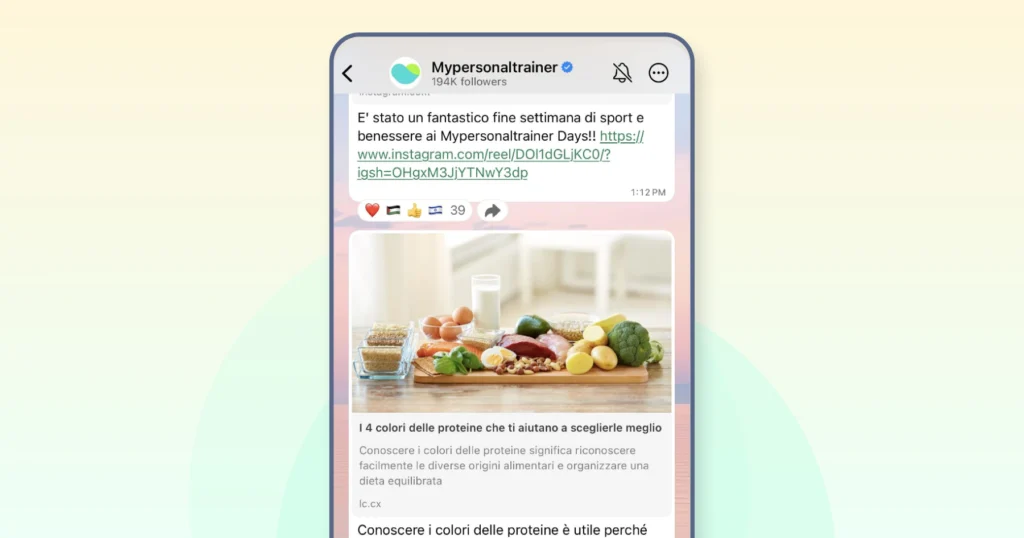
3. Build Credibility With Regular, Valuable Updates
By consistently sharing helpful information, your audience begins to see your brand as reliable and informative.
Use case: A tech company can share product updates or how-to guides to keep users informed and engaged.
4. Improve Customer Experience Without Overwhelming Them
Followers can choose when and how to engage with your content, making it easier for them to stay connected without feeling pressured.
Use case: An airline company can send curated offers and destination tips that customers can check at their convenience.
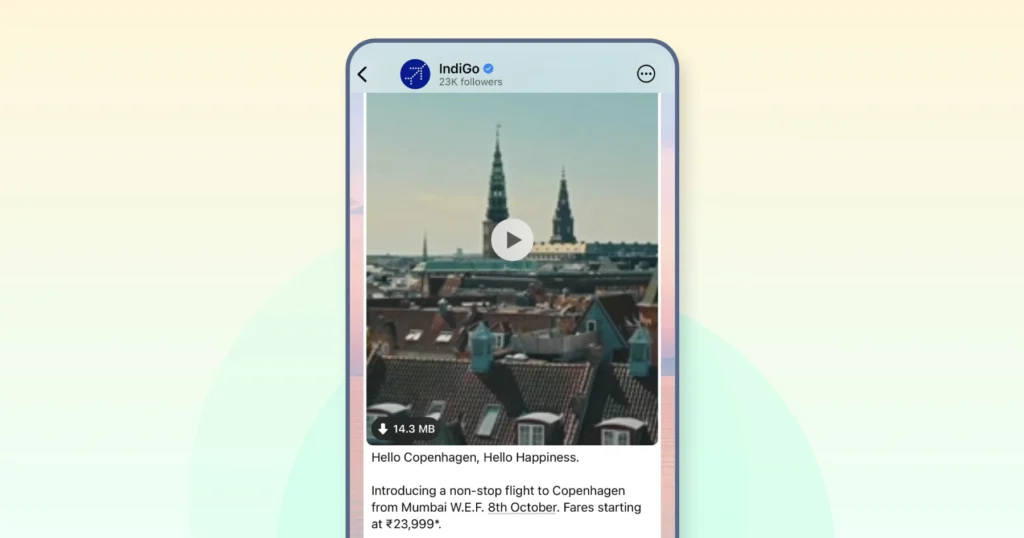
5. Stand Out in a Crowded Market
WhatsApp’s familiarity makes it easier for your audience to engage compared to apps they’re less likely to use.
Use case: A local restaurant can send exclusive menu items or event invites directly to customers who already use WhatsApp daily.
WhatsApp Channels let you share updates and important information in a clear, organized way. This helps you foster reliability and stay visible with your audience without extra effort or unnecessary noise. Read on to see how you can set up your channel.
How to Create a WhatsApp Channel
Setting up a WhatsApp Channel is quick and easy. Here’s how you can create one across different devices.
1. On Android:
- Open WhatsApp and go to the Updates tab.
- Tap the three-dot menu (⋮) in the top-right corner.
- Select New Channel.
- Follow the prompts to add a name, description, and profile picture.
- Tap Create Channel to finish.
2. On iPhone:
- Open WhatsApp and go to the Updates section.
- Tap New Channel.
- Enter your channel name, description, and profile picture.
- Tap Create to launch your channel.
3. On Mac:
- Open WhatsApp Desktop and click on the Updates tab.
- Click New Channel.
- Fill in the required details: name, description, and profile image.
- Click Create Channel to finalize.
4. On Web:
- Open WhatsApp Web and navigate to the Updates section.
- Click New Channel at the top.
- Enter your channel name, description, and profile picture.
- Click Create Channel to complete the setup.
How to Get Your WhatsApp Channel Verified
Once you’ve set up your channel, getting it verified adds credibility and helps your audience trust that it’s an official source.
Verification is WhatsApp’s way of confirming that your channel belongs to a real business or organization. A verified channel shows a badge next to its name, making it easier for users to trust your updates.
Here’s how you can apply for verification.
1. Subscribe to Meta Verified for Business
- Open the WhatsApp Business app.
- Navigate to Tools > Meta Verified.
Follow the prompts to subscribe to the Meta Verified for Business plan.
2. Create a Verified Channel
- After subscribing, go to Tools > Meta Verified > Verified Channel.
- Tap Get Started > Continue.
- Enter a channel description.
- Tap Create Verified Channel.
This will create a new channel with your verified business name and profile picture.
3. Add a Verified Badge to an Existing Channel
If you already have a channel, open it and tap the channel name.
- Tap Add a Verified Badge.
- Select the verified business account you’d like to connect to your channel.
- Tap Confirm Changes.
Your channel should now display the verified badge. If it doesn’t appear immediately, restarting the WhatsApp Business app may help.
4. Remove the Verified Badge (If Needed)
To remove the verified badge:
- Open your channel and tap the channel name.
- Tap Remove Verified Badge > Remove.
Removing the badge does not affect your Meta Verified subscription. This option is useful when transferring ownership of a verified channel to another WhatsApp user.
⚡Recommended Reading: WhatsApp Verification Explained: Steps, Benefits & Best Practices
What are the Limitations of WhatsApp Channels?
WhatsApp channels are a useful tool, but they do have some limitations that businesses should consider before relying on them completely.
- One-way communication only: Channels only allow you to send updates. Followers cannot reply or ask questions within the channel itself.
- Limited audience insights: You can see basic follower counts and views, but detailed analytics like engagement metrics or audience demographics are not available.
- Requires follower opt-in: Only users who actively follow your channel will receive updates, so growing your audience depends on how well you promote it.
- No built-in transaction or support tools: Channels are designed for sharing information, not handling customer interactions, payments, or support requests.
- Dependent on WhatsApp’s rules: Content and behavior are subject to WhatsApp’s policies. Violations could result in restrictions or suspension.
But above all, WhatsApp channels are not a replacement for WhatsApp API features.
For businesses that need two-way communication, automated responses, WhatsApp chatbots, customer support, or broadcast messaging at scale, the WhatsApp Business API is a better option.
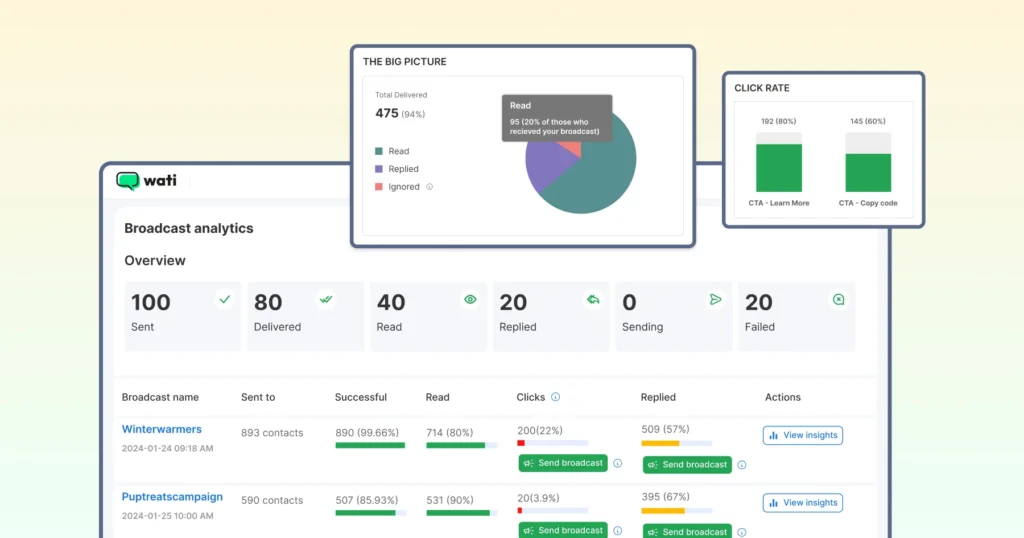
Let’s take a closer look at why that’s the case.
Looking for More? WhatsApp API Can Help
WhatsApp Channels are great for sharing updates and keeping your audience informed. However, businesses often need more, especially when handling customer conversations, automating responses, or managing large-scale messaging.
That’s where the WhatsApp API comes into play. It’s designed to help you do more with WhatsApp, whether it’s sending broadcast messages to reach a wider audience, setting up automated replies to handle common questions, or using chatbots to guide customers through services easily.
Wati, built on the WhatsApp API, makes these features accessible without technical hassles. It helps you manage conversations smoothly, automate repetitive tasks, and stay connected with customers across different touchpoints from one platform.
If you’re ready to move beyond one-way updates and offer more helpful, personalized communication, Wati can help you take that next step.

How to Use WhatsApp for Marketing
WhatsApp Channels provide businesses with a streamlined way to share updates and announcements with their audience. They allow you to communicate key updates efficiently, keeping your audience informed while maintaining a clean, professional experience.
However, for businesses seeking to engage in personalized conversations, automate responses, or offer customer support at scale, the WhatsApp API offers a more robust solution.
It supports two-way communication, automation, and integration with other business tools, enabling a more interactive and responsive customer experience. Book your free demo today to see it in action.
By understanding the unique strengths of both, you can choose the one that best aligns with their communication needs and objectives.
FAQs About WhatsApp Channels
No, scheduling isn’t supported on WhatsApp channels. You’ll need tools like the WhatsApp API for automated and scheduled messaging.
You can promote your channel link or QR code on your website, social media, or newsletters. Clear messaging about the value you offer helps attract followers.
Yes, creating and sharing a WhatsApp Channel is free. However, using advanced features like automation or chatbots requires the WhatsApp API and may involve additional costs.
Yes, you can add a name, profile picture, and description that reflect your brand. This helps followers easily recognize and connect with your channel.


Latest Comments